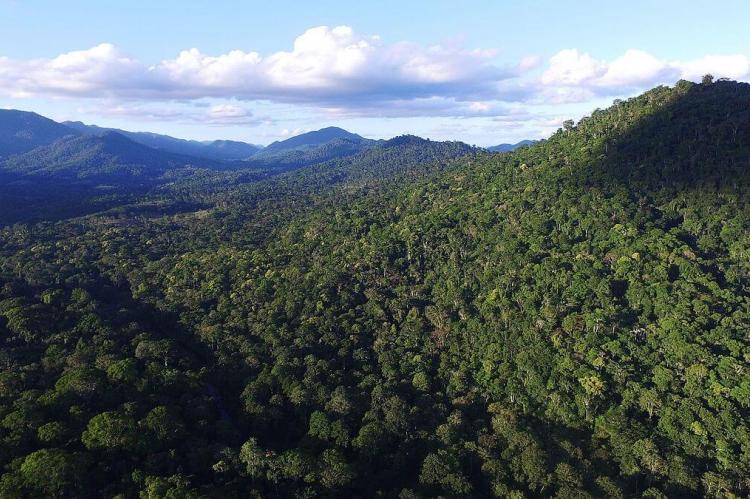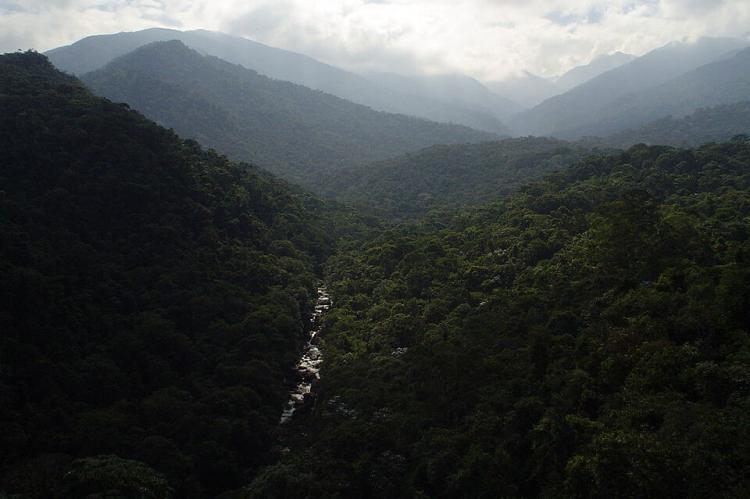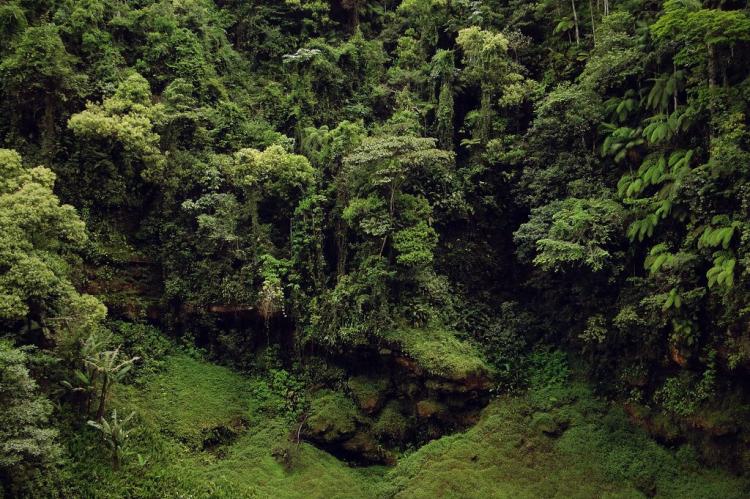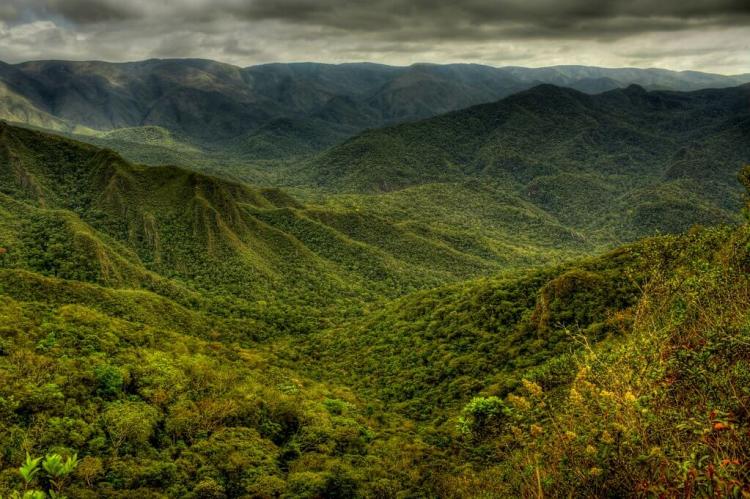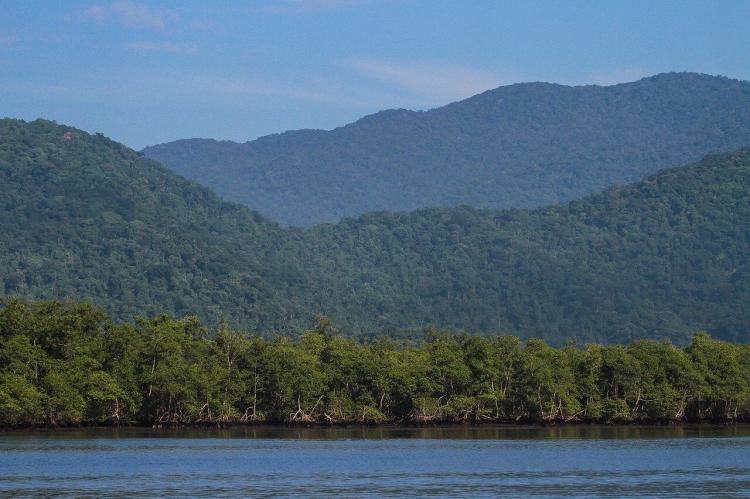The Atlantic Forest: Exploring its Rich Biodiversity and Conservation Challenges
The Atlantic Forest, or Mata Atlântica, is a biodiverse region along Brazil's eastern and southeastern coast, extending into Argentina and Paraguay. One of the most varied ecosystems on the planet, home to major cities like Rio de Janeiro and Sao Paulo, the forest also houses over 148 million people.
The Atlantic Forest: Exploring its Rich Biodiversity and Conservation Challenges
The Atlantic Forest, known as Mata Atlântica, is a verdant treasure trove of biodiversity stretching along Brazil's eastern and southeastern coast, extending into northeastern Argentina (the Missionary Jungle) and east Paraguay. This sprawling natural region, although reduced from its original expanse of approximately 1,200,000 square kilometers (463,600 square miles) to less than 100,000 square kilometers (38,600 square miles) today, remains one of the most diverse ecosystems on the planet, second only to the Amazon Rainforest. Home to major cities like Rio de Janeiro and Sao Paulo, the Atlantic Forest also provides a habitat for over 148 million people.
Historical Context and Current State
Initially, the Atlantic Forest covered vast portions of Brazil's Atlantic coastline and reached into Paraguay, Uruguay, and Argentina. Today, remnants of this once-majestic forest exist mainly in small, fragmented patches and protected areas. The impact of human activities, including urbanization, agriculture, and logging, has significantly contributed to the decline of this rich ecosystem.
Recognizing its ecological importance, UNESCO has designated two crucial portions of the Atlantic Forest as World Heritage Sites: Atlantic Forest Southeast Reserves and Discovery Coast Atlantic Forest Reserves. The Mata Atlântica Biosphere Reserve covers essential parts of the Atlantic Forest across 14 Brazilian states.
Ecological Diversity
The Atlantic Forest comprises various ecoregions, contributing to its unique ecological tapestry. These include seasonal moist and dry broad-leaf tropical forests, tropical and subtropical grasslands, savannas, shrublands, and mangrove forests. This diversity of habitats allows for the coexistence of an estimated 20,000 plant species, with new species continually being discovered. Despite the significant reduction in its original size, the Atlantic Forest remains a biodiversity hotspot.
Forest Variations
Forests can be categorized into distinct variations, each with its unique characteristics. Coastal Restinga forests, for example, thrive in low areas on stabilized coastal dunes. Coastal moist forests, or Atlantic moist forests, are evergreen tropical forests with diverse structures. Interior (inland) forests, called the Atlantic semi-deciduous forests, witness many trees shedding their leaves during the dry season.
Atlantic Dry forests, positioned farther inland, form a transition between the arid Caatinga to the northeast and the Cerrado savannas to the east. Montane Moist forests in the Serra do Mar and other mountainous regions are home to distinctive flora, including Araucaria and evergreen trees of the laurel (Lauraceae) and myrtle (Myrtaceae) families. Additionally, Shrubby Montane Savannas occur at the highest elevations, adding to the diverse mosaic of the Atlantic Forest.
Unique Fauna
This forest stands out for its rich flora and unique fauna, owing to its historical isolation from the Amazon Basin. Although geographically near the Amazon Rainforest, the Mata Atlântica has evolved independently, making it more ancient than its renowned neighbor. This isolation allowed the Atlantic Forest to develop distinct ecosystems, harboring many species found nowhere else on Earth.
Biodiversity and Endangered Species
The Atlantic Forest is a haven for approximately 2,200 species of birds, mammals, reptiles, and amphibians. Notably, nearly 200 bird species are exclusive to this region. Among the standout inhabitants are the 26 species of small primates, including the golden-headed lion tamarin, black-faced lion tamarin, black lion tamarin, and the critically endangered golden lion tamarin. Other charismatic mammals in this ecosystem include the muriqui or woolly spider monkeys and the maned sloth.
Conservation Efforts and Challenges
While the Atlantic Forest faces ongoing threats from human activities, including deforestation and habitat fragmentation, conservation efforts and protected areas play a crucial role in preserving this unique ecosystem. The forest's importance extends beyond its borders, contributing to global biodiversity and underscoring the need for continued conservation measures to safeguard this ecological gem for future generations.
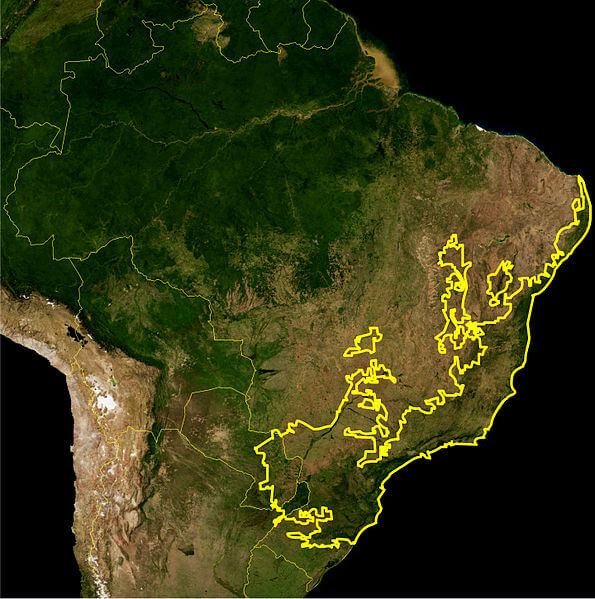
Map depicting the Atlantic Forest biome, as delineated by the WWF.
